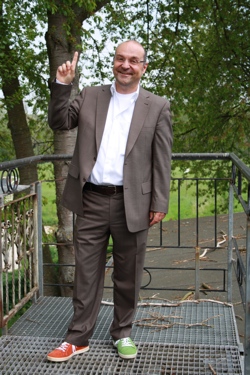Process innovation - Service Innovation – Product innovation
Broaden your team or company's concept of innovation. Anyone who only considers product, service or process innovation is wasting a lot of potential.
Benno van Aerssen recognizes how important it is to clearly define the concept of innovation, and have a broad range of thought regarding this clear concept running throughout the entire company, without this targeted brainstorming cannot take place.
“Clarity creates innovation" Benno van Aerssen.
Types of innovations
Below are the 12 classic types of innovation:
* Prozess Innovations
* Social Innovations
* Organizations-/Structure innovations
* Innovations in employees conduct
* Strategy- and Management innovations
* Product innovations
* Design innovations
* Service Innovations
* Price innovations
* Technology innovations
* Innovation in the conduct of market participants
* Innovation of entire business concepts

Innovation orientation
Innovations can also be divided further into two major categories, the inward and the outward innovations.
Inward types of innovations:
- Process innovations
- Social innovations
- Organizations- und Structure innovations
- Innovation in the conduct of employees
- Strategy and Management innovations
Outward types of innovations:
- Product innovations
- Design innovations
- Service innovations
- Price innovations
- Technology innovations
- Innovations in the conduct of market participants
- Innovations of entire business concepts
Range of Innovations
The range of innovations can also be used for definitions and classifications.
The range of innovations can be divided into different innovation clusters:
- new to the company
- new to the market
- new to the industry
- new to the country
- new to the world
Process innovations – a love-hate relationship
It is still the case that the majority of companies focus their creativity and brainstorming solely in the direction of their products, choosing to somewhat neglect process innovation. All the while it is often in the areas of process innovation where the greatest and most accessible potentials lie. In his seminars and workshops Benno van Aerssen even provides particular creativity techniques and idea generation methods that are focused on process innovation and service innovation.
At the same time, when the areas of process and service innovation are being discussed it is not the usual additional improvements which are right and important, but we are also talking about radical ways of thinking and real
innovations.
Thus process innovations as well as service innovations are so unpopular because the processes, methods and steps that need to be taken in order to change and implement new ideas are embedded in tradition, with systems considered practically untouchable.
What do we typically do with our processes...
- we love them
- we cherish them
- we extend them
- we defend them
- we certify them
- we pay for them
- and we point out if something is not quite working properly.
The process is always the first to be doubted in the case of any failures ;-)
Companies and teams who dwell in the process and service innovation consciously focus their ideas and creativity on...
- re-thinking their processes
- exchanging process steps
- shortening their processes
- rebuilding their processes
- connect with more people
- allow themselves to be developed by new-comers in the industry
- create incentives for innovation processes
- regularly challenge and put themselves and their processes into question.
The spice of life
Playing at the top of the game are currently the companies who have already understood and comprehended through the 'ideation' how to overcome the normal team and departmental boundaries and mix a measure of process innovation, product innovation and service innovation.
New processes create new products and new products create new services, which in turn create new processes.
